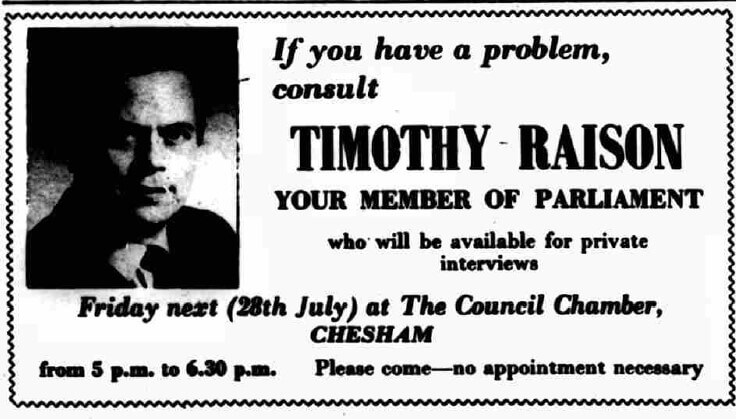by Neil Rees, May 2021
On Thursday June 17, 2021 the national media will be focussed on Chesham and Amersham for the parliamentary by-election.
History of the constituency
Today there are 650 parliamentary constituencies for the British House of Commons, including seven in Buckinghamshire. Each elects a Member of Parliament (MP) to represent them at Parliament. A first past the post system gives the role to the person getting the most votes, even though sometimes that maybe less than half of those who voted.
Constituencies
Historically each English county elected two knights, which were elected by landowners. Buckinghamshire had returned two knights of the shire from 1265. The Borough of Chipping Wycombe had also returned a knight since 1295. Aylesbury constituency was created in 1553, and Amersham was created a constituency in 1624, entitled to return two members of parliament. The 1832 Reform Act did away with many anomalies and divided most counties, including Buckinghamshire into constituencies with two or three MPs.
By-elections
An MP is expected to serve the full parliamentary term. A by-election occurs when an MP ends their term early, usually because they resign or die. An MP can also be removed for being declared bankrupt or being convicted of a serious criminal offence. Occasionally an MP becomes ineligible to remain in the House of Commons because they become entitled to a seat in the House of Lords.
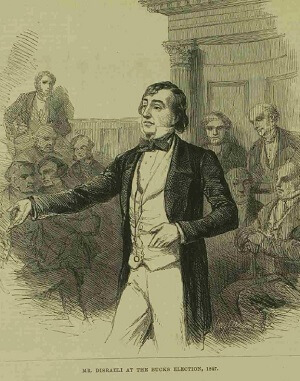
Charles Compton Cavendish represented Buckinghamshire from 1847 to 1857 and was then created Lord Chesham. A by-election was called and his son William Cavendish became MP. Similarly, Benjamin Disraeli, who lived at Hughenden Manor from 1848, represented Buckinghamshire from 1847 until 1876, and he was Prime Minister in 1868, and again from 1874 to 1880. In 1876 a by-election was called after he was created Earl of Beaconsfield. Another interesting case was in 1919 when a by-election was called when Waldorf Astor, who lived at Cliveden in Bucks, inherited the title of Viscount Astor, after his father died. His wife Nancy Astor, stood in his place and became the first serving female MP in England. When Waldorf Astor himself died in 1952, his son William Astor, MP for South Bucks, inherited the title and another by-election was called when he took up his seat in the House of Lords.
Buckinghamshire Constituencies
The Victorian era saw great changes in demographics, with some rural areas depopulating, and some urban areas growing, so the old constituency system had gradually become less representative. The 1885 Redistribution of Seats Act tried to make the population of each constituency fairly equal. Buckinghamshire was divided into 3 constituencies: the Aylesbury or Mid Bucks Division, the Buckingham or North Bucks Division, and the Wycombe or South Bucks Division. Chesham and Amersham came under Mid Bucks.

For 57 years from 1865 to 1923 the role of Mid Bucks MP was held by 4 successive members of the Rothschild family, who all represented the Liberal Party. Lionel Nathan de Rothschild held the seat as a Liberal in 1910 before becoming a Conservative. He held the seat as a Conservative until 1923.
Eligibility to vote
 Up to 1918 only property holders could vote, which effectively meant only wealthy men could vote, although it included a very small number of women before the 1832 Reform Act explicitly barred women by defining a voter as a male person. Effectively about 58% of the adult male population was eligible to vote. Another issue was that you had to be resident for 12 months, which meant that many soldiers returning from the Great War were inadvertently ineligible. The Suffragette movement had highlighted the unfairness that women could not vote, despite their contribution to the war effort. So in 1918, the franchise was extended to all men over 21, and to women over 30. Then from 1928, all men and women people over the age of 21 could vote. From 1969 this was lowered to 18 years of age.
Up to 1918 only property holders could vote, which effectively meant only wealthy men could vote, although it included a very small number of women before the 1832 Reform Act explicitly barred women by defining a voter as a male person. Effectively about 58% of the adult male population was eligible to vote. Another issue was that you had to be resident for 12 months, which meant that many soldiers returning from the Great War were inadvertently ineligible. The Suffragette movement had highlighted the unfairness that women could not vote, despite their contribution to the war effort. So in 1918, the franchise was extended to all men over 21, and to women over 30. Then from 1928, all men and women people over the age of 21 could vote. From 1969 this was lowered to 18 years of age.
Boundary Commission
Each British constituency represents approximately 70,000 people. The Boundary Commission periodically reviews constituencies to keep them about the same population size, and where possible follow county or administrative boundaries. Reviews are caused by some areas disproportionately growing or falling in population. Constituencies can vary considerably in geographical size depending upon the population density. There are also geographical considerations where boundaries cannot be changed. The largest constituency by population is the Isle of Wight, since its boundaries cannot be changed.

Members of Parliament represent their constituency at the House of Commons but they do not always live in the constituency they represent. For example Aneurin Bevan, creator of the NHS, was MP for Ebbw Vale in south Wales but lived at Asheridge Farm near Chesham from 1953 to 1960 (see BFP Nostalgia May 24, 2020).
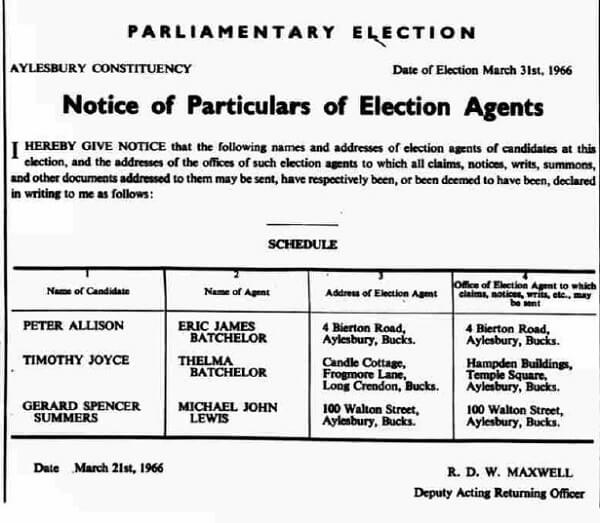
Chesham and Amersham
Before 1974 Chesham and Amersham were in separate constituencies. In 1918 Amersham was transferred to the Wycombe constituency, whilst Chesham remained in the Aylesbury constituency. In 1950 the new constituency of South Buckinghamshire was created which included Beaconsfield, the Chalfonts, Amersham, Chesham Bois and Chenies, whilst Chesham remained in the Aylesbury constituency.
In 1969 the Boundary Commission recommended that the South Buckinghamshire constituency should be split to create the new Beaconsfield constituency, and the new Chesham and Amersham constituency. These were created in time for the 1974 general election. The Chesham and Amersham constituency also includes the Chalfonts and Great Missenden, and its area is that of the former Chiltern District. In those 47 years the Chesham and Amersham constituency has remarkably only had 2 MPs, both Conservative. Ian Gilmour was the first MP for Chesham and Amersham in 1974, and held the post for 18 years until his retirement in 1992. Then it was held by Cheryl Gillan for 29 years. She had been born and brought up in south Wales and served as Welsh Secretary 2010-2012, whilst MP for Chesham and Amersham. She tragically died aged 68 this year, which triggered the by-election.
June 2021 By-election
In order to stand for Parliament a candidate has to be nominated by 10 electors and submit a £500 deposit with their nomination papers. The money is returned if the candidate receives over 5% of the total votes cast. The Chesham and Amersham by-election is on 17th June 2021 and you should have had your voting slips by now. There are 8 candidates all trying to win the seat, and trying not lose their deposit.
MPs who have represented Chesham and Amersham
On Thursday June 17, Chesham and Amersham constituency held a parliamentary by-election. National coverage included a visit to Chesham by Prime Minister Boris Johnson.
I thought it would be interesting to look back at some of the people who have been representatives for the Chesham and Amersham area as MP over the years.
First MPs for Buckinghamshire
Chesham and Amersham were historically represented in Parliament via the MPs for Buckinghamshire. From 1265 to 1832 the county was represented by 2 MPs at a time, and some boroughs could also send MPs. The first recorded MPs for Buckinghamshire were Sir John Chetwode and Sir Thomas Sackville in 1386.
Amersham
In the early 1600s a London solicitor, called William Hakewill, discovered some ancient documents which proved that the boroughs of Amersham, Marlow, and Wendover had all sent members to Parliament in thirteenth century, a practice which had lapsed. He succeeded in re-enfranchising them with financial support from his relative John Hampden. Hakewell then became MP for Amersham in 1624, although the position was later usually filled by members of the Drake (later Tyrwhitt-Drake) family of Shardeloes, until 1832 when the “rotten borough” was abolished.
John Hampden
The most famous local MP is probably John Hampden. He represented the newly re-enfranchised Borough of Wendover, from 1624 until 1629. Hampden later represented Buckinghamshire from 1640. In 1636 He opposed ship tax, on the principle that it was being imposed by King Charles I without parliamentary approval. This was one of triggers for the English Civil War, which started in 1642. On June 18, 1643, Hampden was shot at the Battle of Chalgrove, near Thame. He died of his wounds and is buried in Great Hampden church. There is a statue to him in Aylesbury Market Square, where he is pointing in the direction of his home at Great Hampden, near Great Missenden.
Rothschilds
From 1885 the constituency system was changed and Bucks had 3 MPs for South, Mid and North Bucks. Chesham and Amersham were represented by the Mid-Bucks MP. The first Mid-Bucks MP was Ferdinand de Rothschild, who built Waddesdon Manor, from 1899 his cousin Walter Rothschild, and from 1919 his cousin Lionel de Rothschild. From 1918 the Mid-Bucks (Aylesbury) MP continued to represent Chesham but Amersham came under the South Bucks (Wycombe) Conservative MP, William Baring du Pré. From 1923 the seat of Mid-Bucks left the Rothschild family, and was held by the Liberal MP Thomas Keens who was from Luton. His Bucks links were through his wife who was from Great Missenden.
Lady Terrington
The Liberal candidate, Vera Woodhouse, Lady Terrington won the South Bucks seat from du Pré at the December 1923 general election. This made her one of only eight women in the House of Commons. Terrington attributed her victory to the women’s vote, particularly as du Pré was a strong opponent of women’s rights. She lost her seat a year later to the Conservative candidate, Alfred Knox, at the 1924 general election, an election in which Liberal candidates did badly across the country. Terrington dropped out of politics amid marriage difficulties.
John Haire, Amersham’s only Labour MP
Alfred Knox, a career soldier who had served as the British Military Attaché to Russia, held the seat for the Conservatives until 1945 when John Haire won the seat for Labour. The Labour Party, under Clement Atlee, promised to rebuild Britain and establish a national health service for all. They swept Churchill out of power with a landslide victory. Another new Labour MP was Maurice Edelman (add link), elected to Coventry West who lived in Chesham Bois. Haire was just 37 when he was elected. A university lecturer and graduate of Queen’s University Belfast he joined the RAF during WWII, gaining the rank of Squadron Leader. He held the seat at the 1950 general election but lost in 1951 to the Conservative, William Astor, Waldorf and Nancy Astor’s eldest son. This seat has stayed Conservative ever since then.
New Constituency
In 1950 the new constituency of South Buckinghamshire was created which included Beaconsfield, the Chalfonts, Amersham, Chesham Bois and Chenies, whilst Chesham remained in the Aylesbury constituency. One MP, Roland Bell, a barrister, held this seat for the Conservatives until the next boundary change in 1974 when the new Amersham and Chesham constituency was created.
Conservative MPs
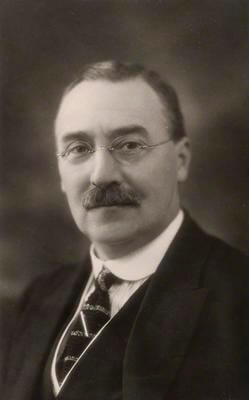
The Mid-Bucks (Aylesbury) seat switched from the Liberal MP, Thomas Keens to the Conservatives in 1924, with Col. Sir Alan Burgoyne of Holmer Green. From 1929 the MP was Captain Michael W. Beaumont, JP, who lived at Wotton Underwood near Aylesbury and was Justice of Peace for Bucks. In 1938 when he resigned, a by-election was called. The new MP was Sir Stanley Reed, who lived at Wendover, but had lived most of his life in India. From 1950 the MP was Spencer Summers, who lived in Northamptonshire. In the 1950, 1951 and 1955 elections his main rival was Chesham farmer Tony Harman who stood for the Labour Party. Summers was knighted in 1956 and was MP for 20 years. In 1970 Timothy Raison was elected. His local connection was that he had spent much of his childhood in the Aylesbury area. He had a majority of 10,000 and remained Mid-Bucks MP until 1992, but only represented Chesham up to 1974, when the new Chesham and Amersham constituency was formed. He died in 2011 aged 82.
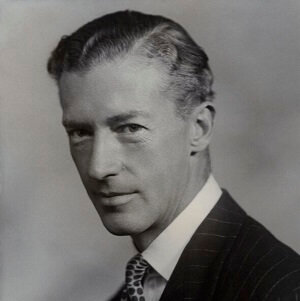

Chesham and Amersham constituency
In those 47 years since 1974 the Chesham and Amersham constituency had only 2 MPs. Both held senior positions in the Conservative government. They also were both forthright people who held their own minds, supported local causes, and did not always vote with the government.
Ian Gilmour
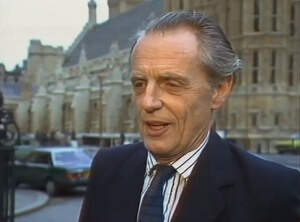
Ian Gilmour was first elected MP for Central Norfolk in 1962, winning by just 220 votes. He held this seat until 1974, when his seat was abolished due to boundary changes. He was adopted as local Conservative candidate at a meeting at Lowndes School in Chesham. He stood for Chesham and Amersham, becoming its first MP. In 1974 in Edward Heath’s government he served as Secretary of State for Defence, and then as Shadow Northern Ireland Secretary. In 1979 when the Conservatives were re-elected under Margaret Thatcher, Gilmour was made Lord Privy Seal, as the chief spokesman for Foreign and Commonwealth Affairs working with Lord Carrington. Amongst his achievements were the Lancaster House talks, which led to the creation of an independent Zimbabwe. He also negotiated with the EEC to reduce Britain’s financial contribution to create the rebate. He did not agree with Margaret Thatcher on many things and she dismissed him in 1981, and he did not stand in the 1992 election. In 1992 after the Conservatives won again under John Major, he was given a life peerage as Baron Gilmour of Craigmillar. In 2001 he switched to join the Liberal Democrats. Lord Gilmour died on September 21, 2007, aged 81.
Cheryl Gillan

In 1992 election Cheryl Gillan stood as Conservative candidate in the constituency, and held it for 29 years. From 1995, she was a junior minister for Education and Employment, under John Major, upto 1997. Then she served as a Conservative whip and as spokesperson for Trade and Industry, Foreign Affairs, and Home Affairs. She had been born and brought up in south Wales, and she was the Shadow Welsh Secretary from 2005. From 2010 she became Secretary of State for Wales under David Cameron until 2012. In 2018 she was made a Dame. She opposed HS2 and supported Brexit, which were the two biggest issues in her latter years. Dame Cheryl Gillan tragically died aged 68 this year, which triggered the latest by-election.

